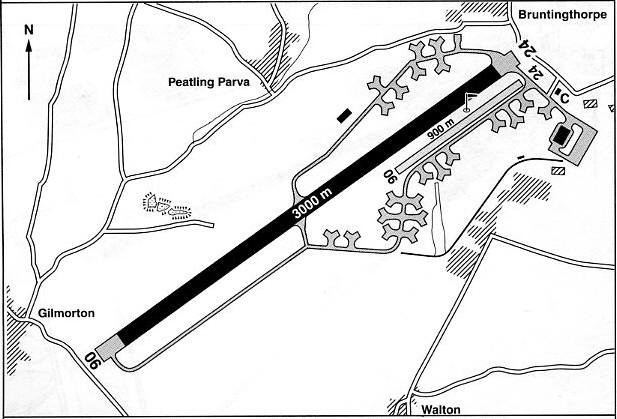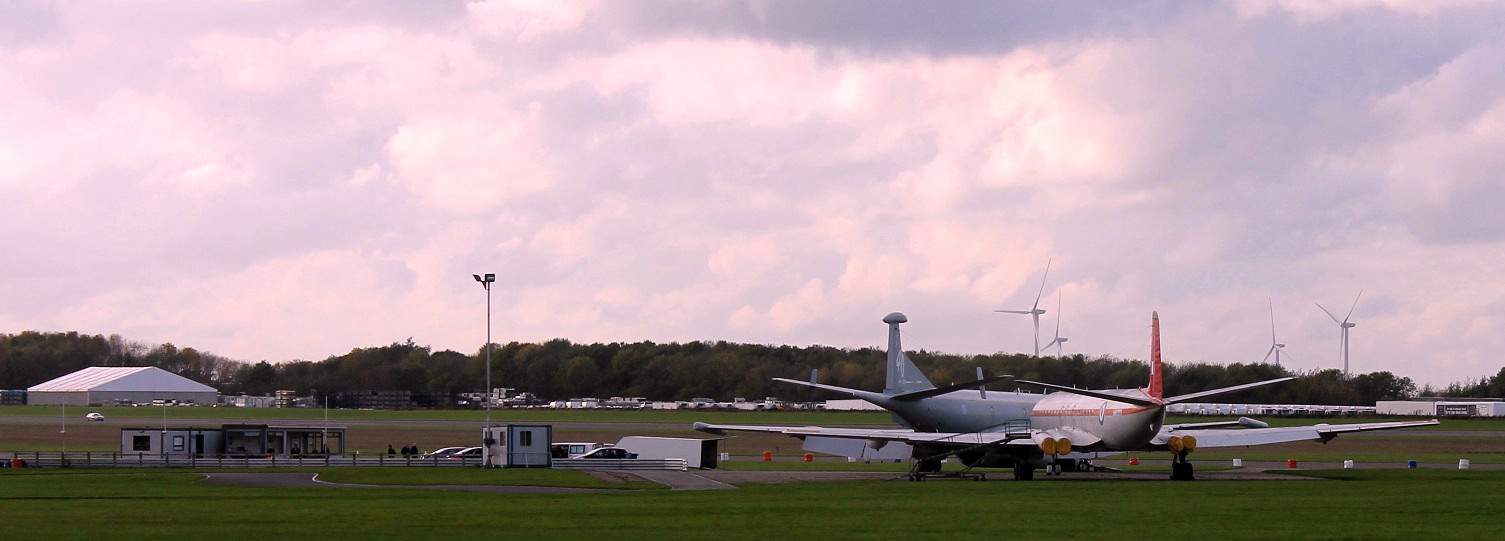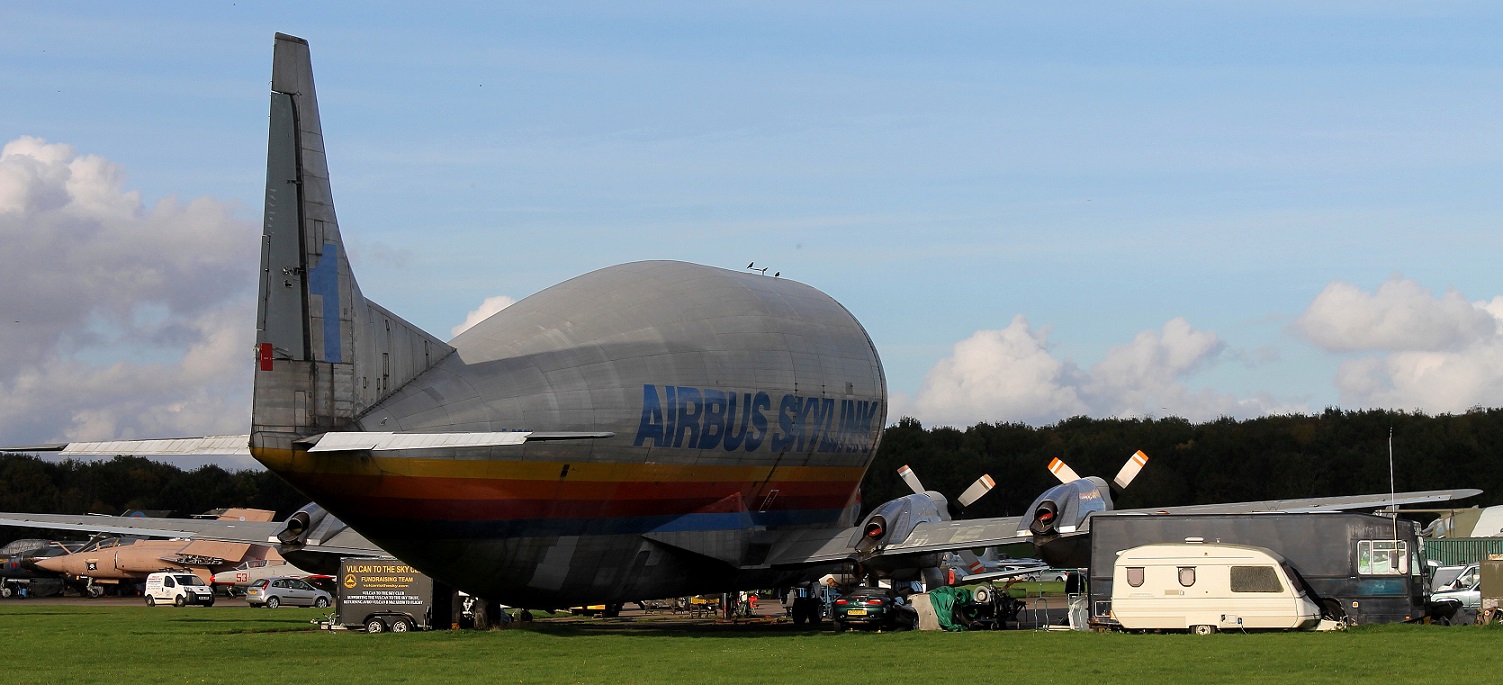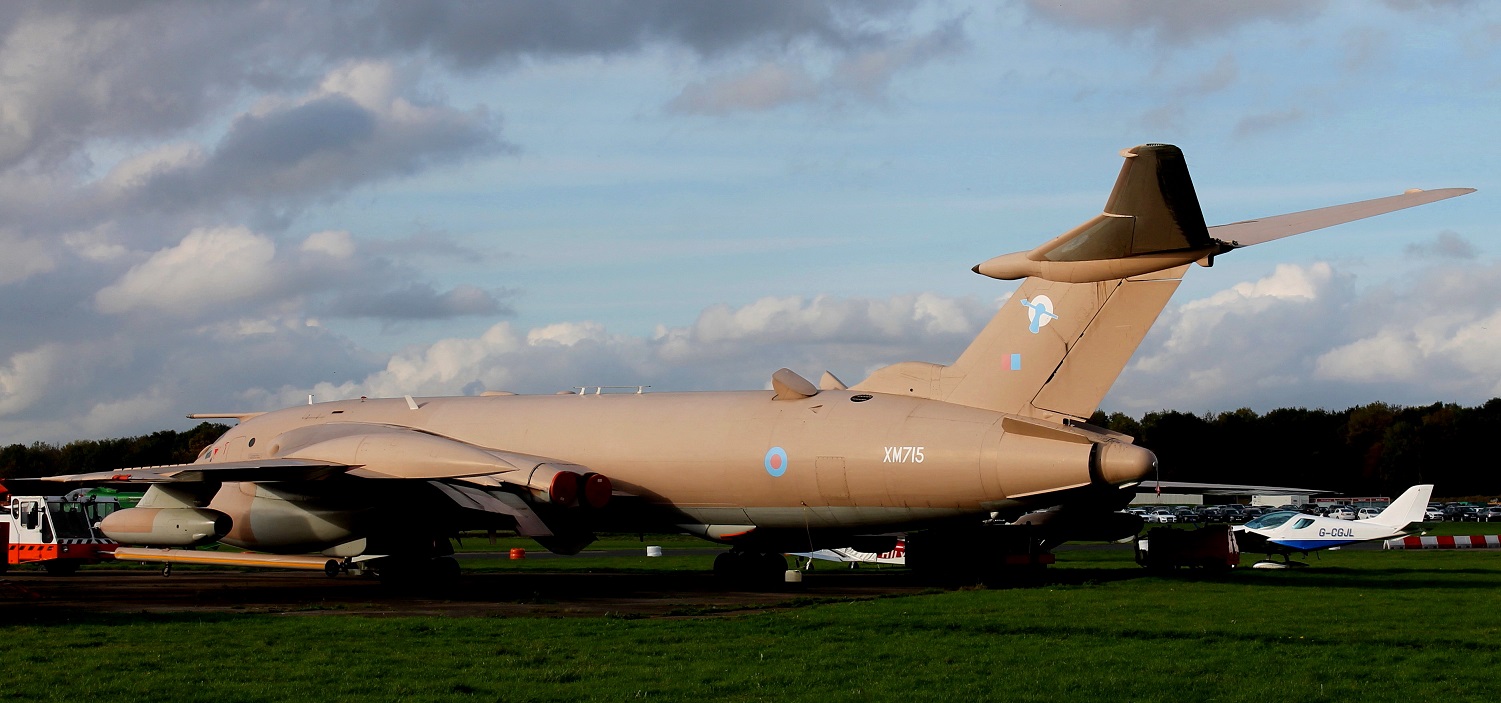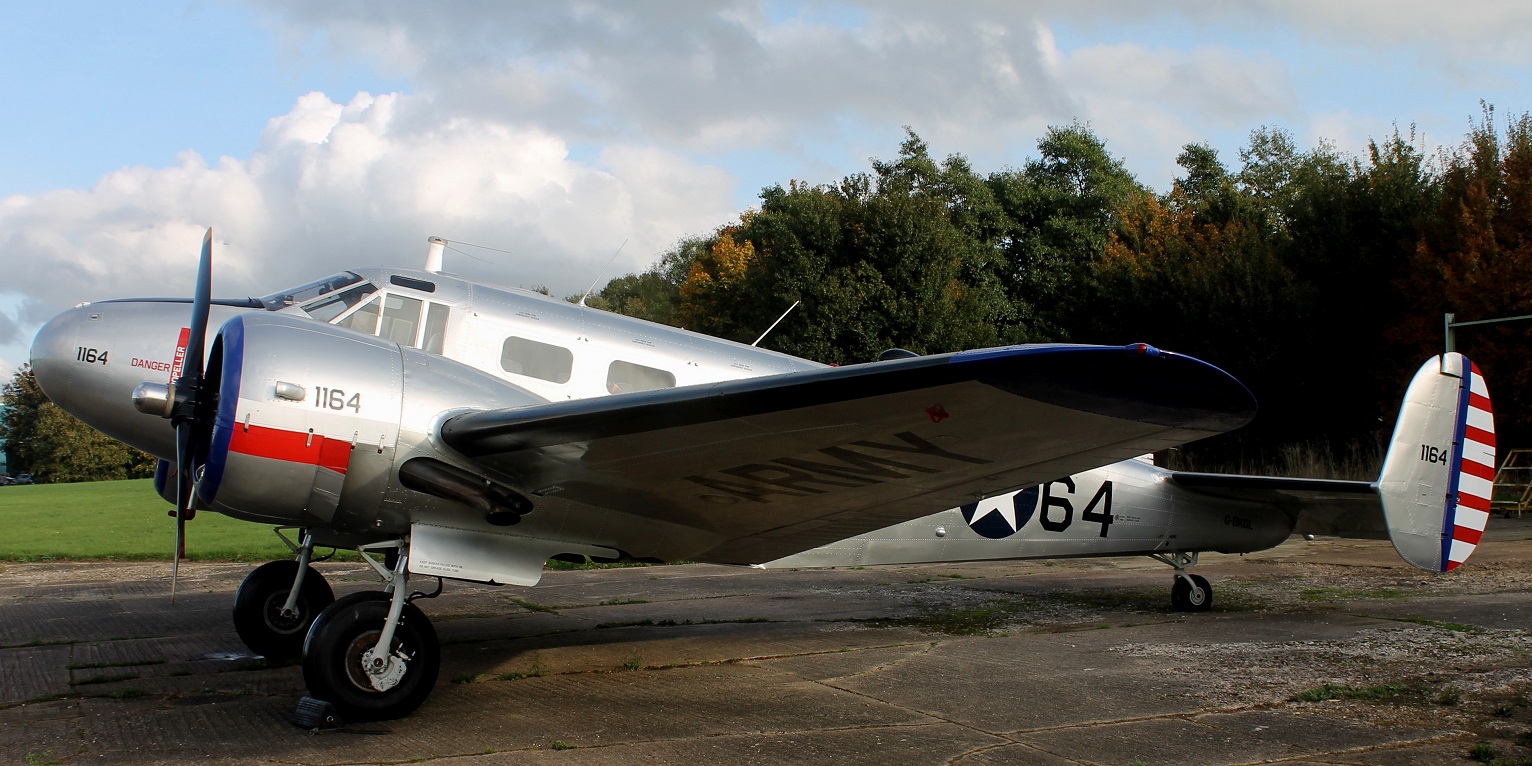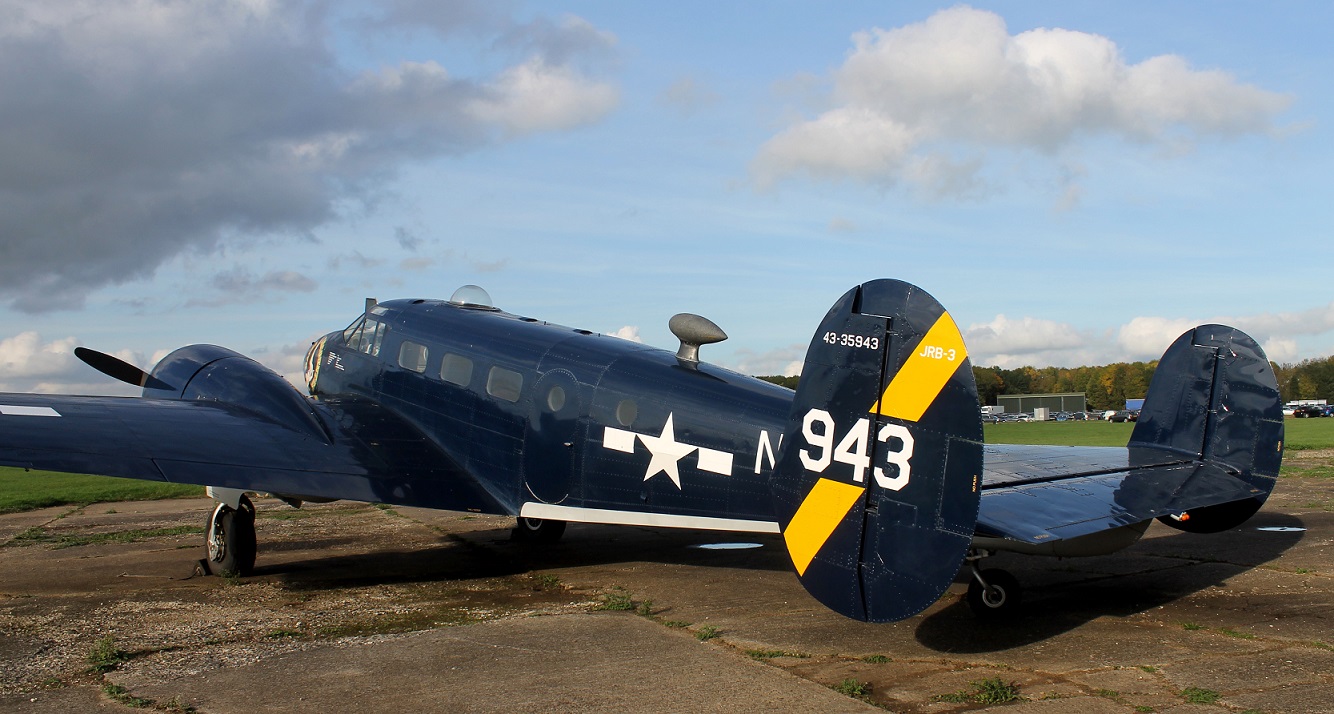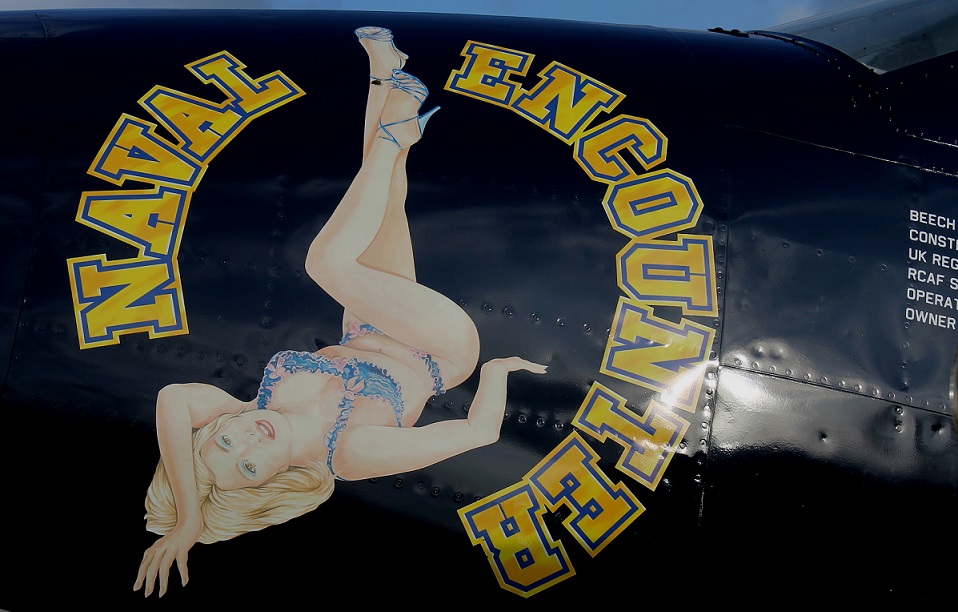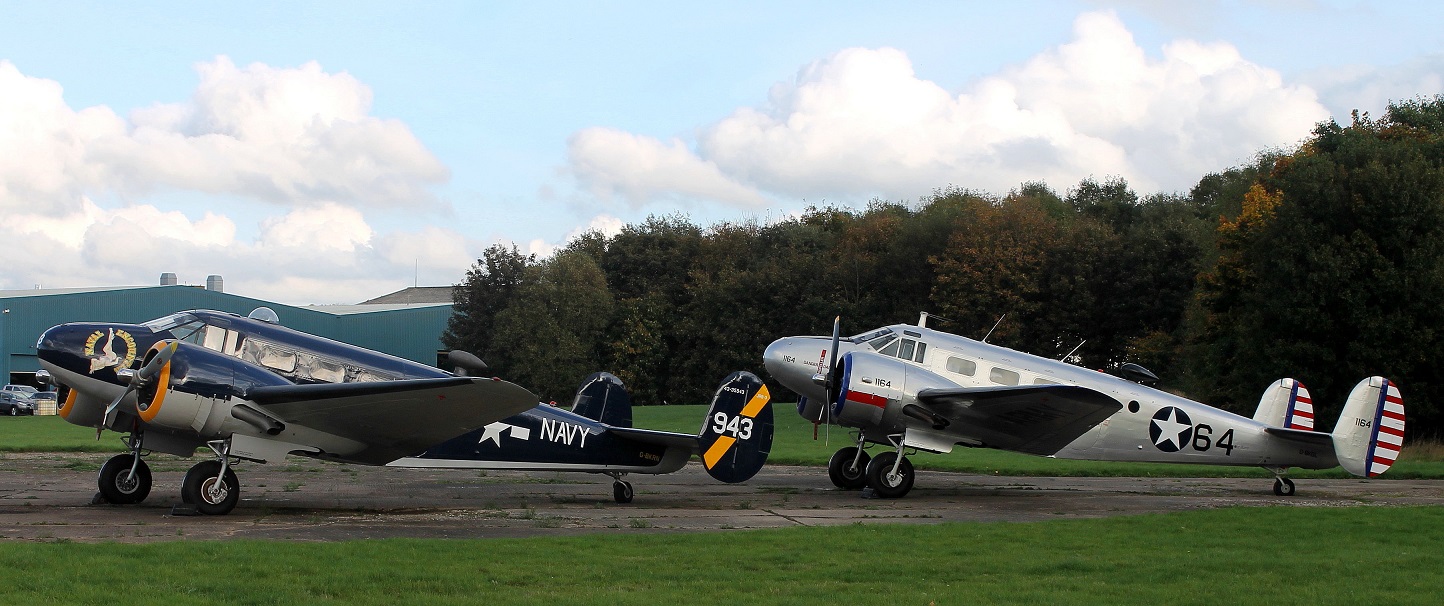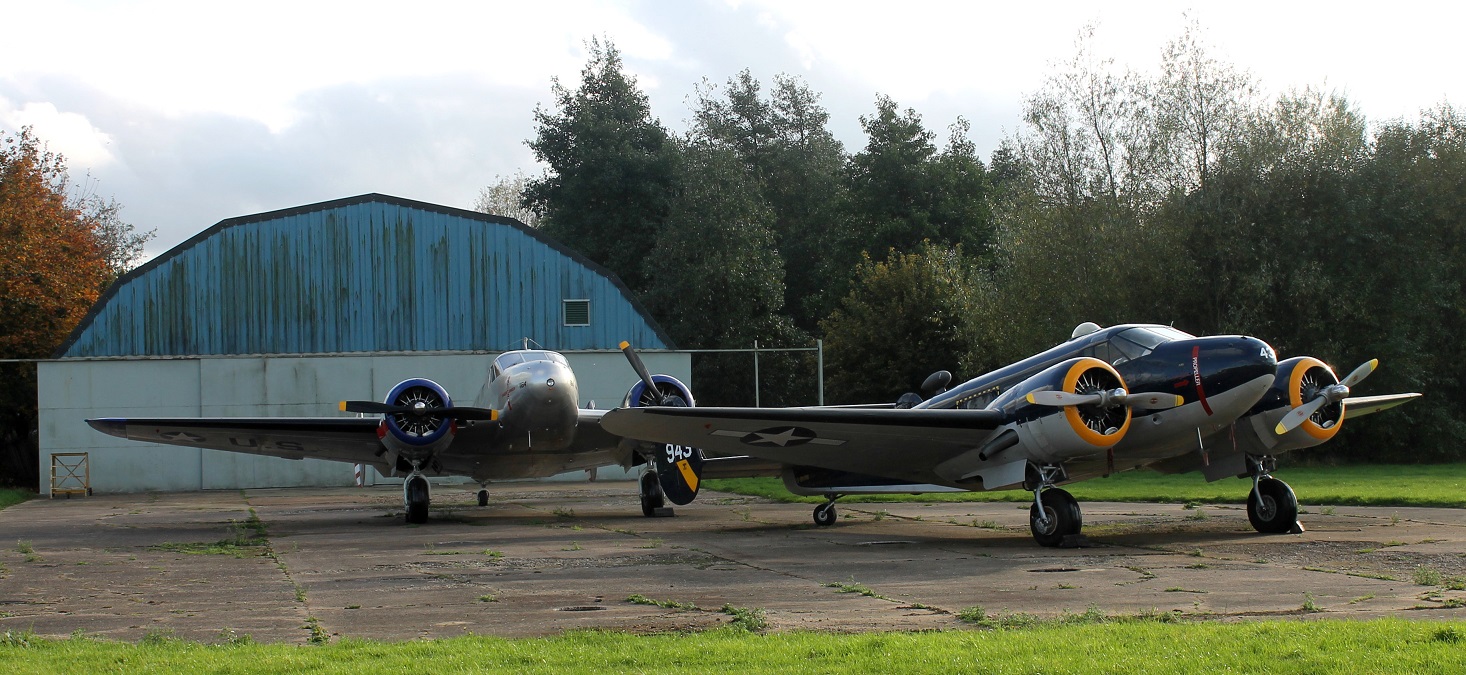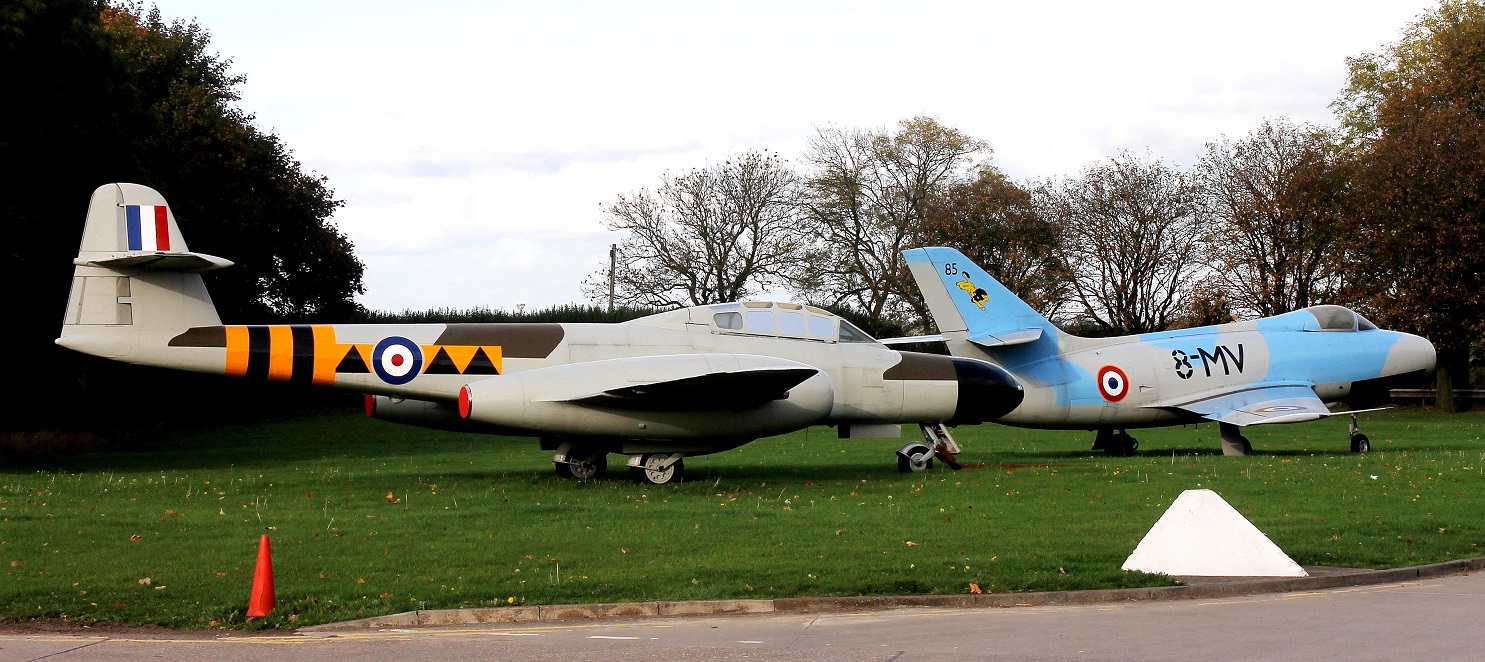Bruntingthorpe
BRUNTINGTHORPE: Military aerodrome later civil aerodrome
Note: All pictures by the author unless specified.
Operated by: 1980s to present day?: C Walton Ltd
Military users: WW2:RAF Bomber Command 92 Group
29 OTU (Vickers Wellingtons, later Avro Lancasters)
Bombing Analysis School
Post 1945:
'V' Bomber dispersal airfield
RAF Gliding School M44 EGS
Activities: Opened 1942 as satellite for North Luffenham, 92 Group, 29 OTU, 1943 to 1944. Also 1683 BDTF. The OTU closed in 1945.
1947 M44 Gliding School
1957 became a satellite for USAF Alconbury. Used by USAF SAC from 1957 to 1959.
USAF 19th TRS in 1959. The ‘Stars and Stripes’ flag was lowered for the last time on the 28th September 1962
Civil users: Post 1945 by Power Jets and Armstrong-Siddeley for jet engine flight tests
Gliding club: Post 1945: Leicestershire Gliding Club
Location: 1.5nm W of A50, 6 nm S of Leicester
Period of operation: 1942 to 1962/64. Intermittent activity since
Note: This map is reproduced with the kind permission of Pooleys Flight Equipment Ltd. Copyright Robert Pooley 2014.
Runways: WW2: 06/24 1828x46 hard 18/36 1280x46 hard
13/31 1280x46 hard
1954 to 1957: 06/24 lengthened to 3047 and widened to 60 metres for USAF use. This was also the time when the other wartime runways and dispersal areas were broken up to provide hardcore for the new runway and aprons. Early example of aviation led recycling?
1990: 06/24 3000x60 hard
2001: 06/24 3000x60 hard 06/24 900x25 grass
In late 2004, (and also in 2007), two AAIB accident reports state the grass runway was approximately 800 metres long and S of the hard runway and that “a subsequent check revealed that the Flight Guide used by the pilot did not accurately depict the grass runway location”. Inaccurate information published in pilot Flight Guides was often found in researching this Guide. I’d also add that, “up to date” VFR charts acquired for a flight to the Algarve in August 2007 revealed many very serious omissions and mistakes. And who produces these charts, surprise, surprise - a company based in the USA!
NOTES: In 1943/44 the 1683 Bomber Defence Training Flight (BDTF) were operating Miles Martinets and, - Curtiss Tomahawks!
POWER JETS
In 1944 Power Jets R&D Ltd had a flight test section with two Avro Lancasters and a Vickers Wellington adapted as flying test beds for jet engines. In addition they had two Gloster Meteors. On 19th October 1945 Air Commodore Frank Whittle first flew a jet powered aircraft, a Meteor F.1 EE210*, briefly from here and flew again for forty five minutes a few days later. It is said to be an extremely rare event for a aero engine designer to fly as PIC let alone solo in an early example of a type powered by his own creations! And don’t forget, the two-seat T.7 trainer version did not fly until the 19th March 1948.
It could easily be claimed that this was proof that by late 1945 the importance of Sir Frank Whittle in ‘high circles’ had become greatly diminished and indeed some cynical observers of history can equally easily claim it would certainly have been ‘rather convenient’ if he had been killed. To support this the Meteor was a very dangerous aircraft to fly, a total of 890 were lost, (very few if any I believe due to enemy action?), with 145 lost in 1953 alone, by which time the design was supposedly well developed! 3,947 were built which means that nearly 22.5% (almost one in four) crashed resulting in virtually total write-offs, very often if not usually with fatal results – a truly appalling safety record.
This might well be worth spelling out. In late 1945 it was decided that Sir Frank Whittle, with very little if any flying experience for many years, was let loose in an aircraft known to be very dangerous to fly and exceedingly difficult to handle if anything went wrong. Plus, he went off in the first production prototype! As many very experienced and especialy military test pilots testify, “Never, ever, fly the Mk.1 of anything – unless ordered to do so.” This is an aspect overlooked even by Andrew Nahum in his most excellent book Frank Whittle, invention of the jet. But, without reading this book I could not have made the connections. Which certainly doesn’t prove they exist of course.
* Note: EE210 was the first production Meteor (then with serial EE210/G) and first flew from MORETON VALLANCE (GLOUCESTERSHIRE) on the 12th January 1944.
THE USAF CONNECTION
From 1957 to 1962 was used by USAF RB.66B Destroyers and B47 Stratojets. Even with the extended runway the performance of the B.47s was marginal even with JATO ‘bottles’ fitted especially on hot summer days and it seems the 4ft high wooden bounday fence posts at the runway ends were partly sawn through at the base to prevent damage!
THE LOUGHBOROUGH & LEICESTER MUSEUM
In 1983 the Loughborough & Leicester Aircraft Musuem moved here and in 1984 the British Aviation Heritage moved in staging an air show in June. Both enterprises failed although Nick Grace did fly his Spitfire TR.IX from here on several occassions. On 24th June 1988 the English Electric Lightning F.6 XR728 flew in from RAF BINBROOK to its new owners, the Lightning Preservation Group.
1993 was a most auspicious year for BRUNTINGTHORPE because a second Lightning XS904 arrived from WHARTON in 1993 (21st January) the last ‘military’ flight of the type in the UK. On the 23rd March that year the last airworthy Avro Vulcan XH558 arrived by air for C Walton (Aviation Division). A big air show in July followed and the 19th November saw the arrival, by air, of Handley Page Victor K.2 XM715 plus English Electric Canberra B2/6 XH568 for Classic Aircraft Projects.A most memorable year!
MORE NOTES
In 1992 the Vintage Aircraft Team arrived decamped by developments at their previous base at CRANFIELD until 1996.
In 1994 an ex-Air France Boeing 747 arrived but despite many plans this was destroyed in May 1997 on a CAA/US FAA bomb attack simulation test.
Now has an Air Museum with nearly flightworthy Lightning and Vulcan exhibits and ‘Big Thunder’ air displays were performed from 1993 to 1996 to be replaced by ‘Rolling Thunder’ displays whereby the big historic jet powered aircraft based here are high-speed taxied twice a year. On the 1st July 1996 a Aerospacelines Super Guppy 210 landed to be handed over to the World Aviation Heritage as was the last flying example. Also, the DH.104 Comet XS235 which landed on 30th October 1997. One can only hope, (I trust you will agree), that this endeavour goes on and on and really develops as the years pass. We certainly need this in the 21st century as so much aviation heritage, and so many wonderful aircraft, have been unthinkingly and carelessly burnt or scrapped in the past.
THE AVRO VULCAN XH558
Arguably the most significant development in recent UK airshow history was the restoration of this Vulcan to flying condition, a truly monumental task. The Vulcan had arrived here in 1993 and, after pretty much sitting put for some seven years albiet performing high speed taxy demonstrations; a project in 2000 to resurrect XH558, and get it airworthy was commenced. Almost seven years later and with an investment of £7.5m, plus a huge amount of volunteer effort and expertise, on the 18th October 2007, XH558 took to the skies once again.
Some of the story of this remarkable achievement is told in Vulcan Boys by Tony Blackman, and the 'Vulcan to the Sky' project was an immense success at air shows on the whole. The main problem being that the CAA had decreed that it could only operate under VFR flight rules - which applied mostly to light aircraft. The lookout from a Vulcan has been compared to peering through a letter box, hardly ideal for avoiding GA traffic, gliders and microlights. Later common sense prevailed and the CAA decided that limited IMC could be used, to cruise above cloud during transits between air shows.
In 2011 the project moved to FINNINGLEY (DONCASTER) airport.
PERSONAL MEMORIES
In 2013 and 2014 I visited BRUNTINGTHORPE in my truck, delivering and collecting an Auster aeroplane. Here are some pictures, including some of the museum exhibits which are shown above. I was delighted to discover a brace of Beech 18s as, even as a young lad, I have always considered the type to be one of the most lovely designs ever.
geoff MONTGOMERY
This comment was written on: 2019-12-22 02:14:15Hi, I'm trying to find out details of WW2 Wellington bomber (BJ909) that crashed at Kimcote while attempting to land at Bruntington airfield on the night of 5 Jan 1945. My Uncle, Flight Sergant Keith Allen (killed in the crash), was navigator on the flight with RAF 29 Operation Training Unit. If anyone has information regarding the crash or could advise where information is to be found, I would be most appreciative. Regards Geoff
We'd love to hear from you, so please scroll down to leave a comment!
Leave a comment ...
Copyright (c) UK Airfield Guide
















